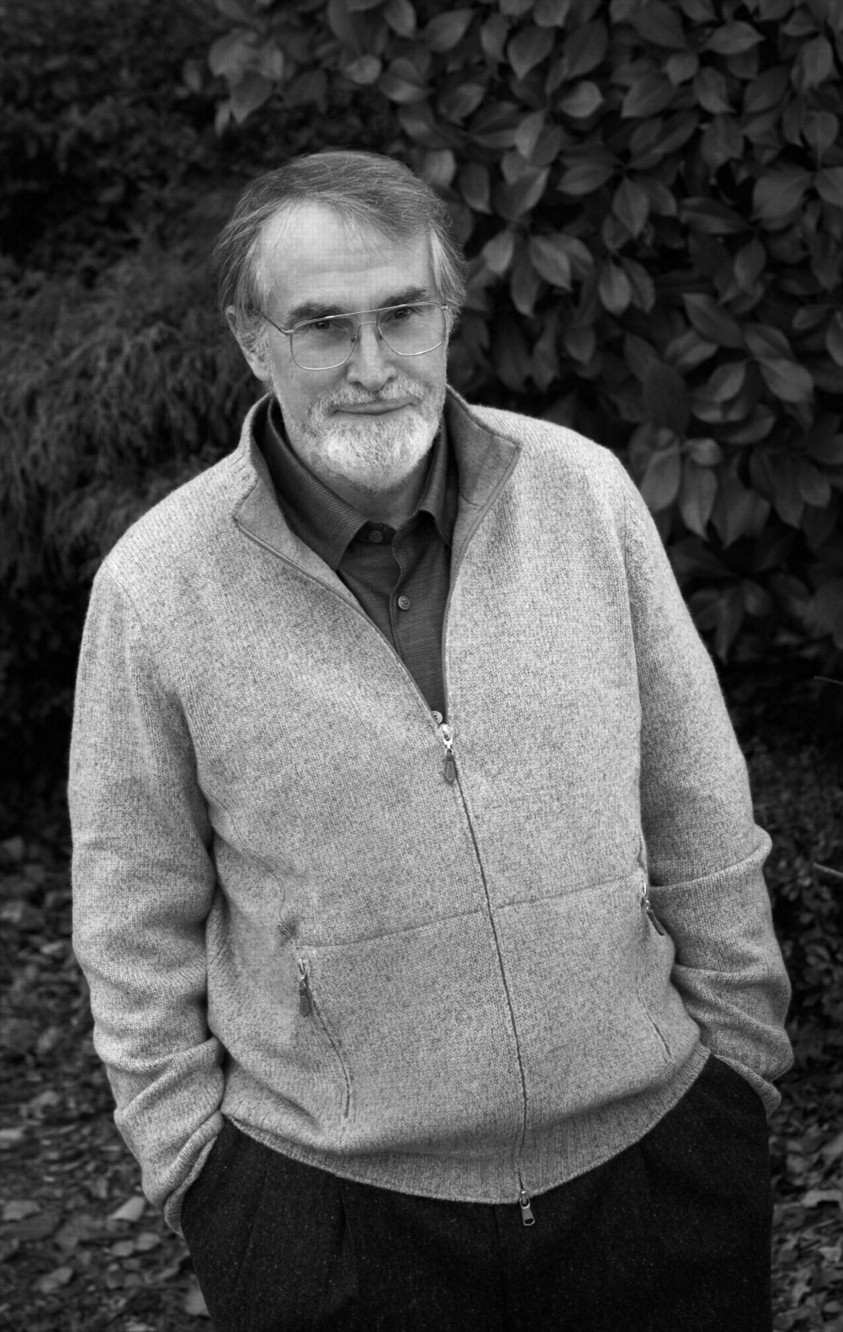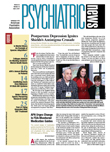In 1957 Rhoda Torrey was about to enter her freshman year of college when she experienced what her mother termed a “nervous breakdown.”
Fifty years later, Rhoda Torrey is hospitalized again, now in New York's Mohawk Valley State Psychiatric Institute.
In the intervening years, her brother Fuller Torrey, M.D., moved by Rhoda's illness and puzzled by the explanations doctors in the late 1950s offered the family, would pursue a career as a psychiatric clinician, researcher, and fierce advocate for treating schizophrenia as a neurobiological illness.
In a spate of widely read books, such as his 1982 Surviving Schizophrenia, Torrey challenged the prevailing theories that blamed families and parents and offered a different narrative based on emerging evidence that schizophrenia is a disease of the brain.
In part because of Torrey's influence, the notion that schizophrenia is caused by bad parenting now seems as archaic as bloodletting.
“Things are obviously very different today, but in my era it had an extremely toxic effect on my mother, who tended to accept what authorities told her,” Torrey told Psychiatric News.
As a scientist at the National Instittue of Mental Health (NIMH), and later at the Stanley Medical Research Institute and in his own independent research, Torrey has been one of the foremost proponents of an infectious etiology for schizophrenia. While not yet embraced by the mainstream, the infectious hypothesis is no longer a concept on the fringe.
Today, he is associate director for laboratory research at the Stanley Medical Research Institute (he was executive director until 2003) and president of the Treatment Advocacy Center, an organization that advocates for laws permitting involuntary treatment of patients with severe mental illness.
“Fuller gets as much credit as anyone for moving American psychiatry from a psychoanalytic foundation to a biological one,” said APA Trustee Roger Peele, M.D., who was chair of the department of psychiatry at St. Elizabeths Hospital in Washington, D.C., and hired Torrey as a staff psychiatrist in 1977.
“His provocative books and his plausible, although yet to be proven, concept as to the cause of schizophrenia contributed to a focus on the biological. His call for change was markedly enhanced by not remaining academic. He is combative—when public agency chiefs heard he was due to be on national TV, they ran to their bunkers—and he has used pithy public pronouncements to hammer home the need for public research monies to be devoted to a biological understanding of people with the most disabling of psychiatric illnesses.”
Last Great Frontier
As early as fourth grade, Torrey said, he had a “life plan” to be a doctor, expecting to be a small-town practitioner like those he knew in the upstate New York town where he was raised. By his teens he was determined also to spend time as a doctor in third-world countries.
So after medical school at McGill University, he spent two years in Ethiopia serving as staff physician to 600 Peace Corps volunteers and developing preventive health programs for the local population. By that time, his sister was very ill, and he had already taken an interest in psychiatry; when he returned to the United States, he entered a psychiatry residency at Stanford University.
“I was also leaning toward pediatrics, but as I became more aware of how much was not known about the brain, it just seemed like the last frontier,” Torrey said. “When I was in medical school [physicians] were starting to do open-heart surgery. I thought, 'Well, it's an interesting pump, but that's all it is.' Whereas the brain is this enormously complex organ, and remarkably little is known about it.”
At McGill and later at Stanford, he was exposed to a biological approach to mental illness; he recalls that a first-year instructor at McGill, Hans Lehman, M.D., was known as the first clinician in North America to use chlorpromazine. The medical school was housed next door to the Montreal Neurological Institute, a premier neuroscience center.
But Torrey concedes that his antipathy toward nonbiological explanations stems from the experience of his sister's illness.
“Schizophrenia is a terrible disease to have, as bad as any disease we know of, and it's a huge burden to bear for families,” he said.“ To have on top of that the burden of being told you caused it is almost unbearable.”
Torrey worked as a staff psychiatrist at St. Elizabeths for nine years. Peele recalled that Torrey worked with the most challenging patients and established a goal of using no seclusion or restraints on acute admission units two decades before it became the nation's goal.
Infectious Hypothesis Develops
Although he had been publishing papers on various topics since completing medical school, it was not until after he left St. Elizabeths that he began to think of himself as a researcher. He became principal investigator of NIMH's Schizophrenia/Bipolar Disorder Twin Study, and he and colleagues produced more than a dozen publications showing differences in crucial brain structures between affected and unaffected siblings in twin pairs.
Among those was a 1990 article in the New England Journal of Medicine demonstrating that subtle neuroanatomical differences—namely, small anterior hippocampi and enlarged lateral and third ventricles—are consistent neuropathologic features of schizophrenia.
All the while, Torrey had been fascinated by the possibility that schizophrenia had an infectious origin. As early as 1973 he published an article in Lancet on the topic, “Slow and Latent Viruses in Schizophrenia” (July 7, 1973).
He was drawn especially to the work of the late British psychiatric epidemiologist, Edward Hare, M.D. Writing in the 1970s and 1980s, Hare was interested in what he believed was a real increase in the incidence of psychosis in the 19th and 20th centuries (as opposed to an increase in diagnosis, as others have held), a fact that he believed precluded a merely genetic cause.
In addition, Hare had documented a marked increase in late-winter and early-spring births among people with schizophrenia. Along with the evidence for increasing incidence, this pointed to an infection, possibly acquired during winter months in utero.
“I started doing those studies here and replicated the same seasonal variation,” Torrey said. “I began to think that this is a really odd disease if you are only thinking of genes or bad mothers.”
Since the 1970s, Torrey has published more than 30 articles on seasonal variation and possible infectious causes of schizophrenia, focusing especially on the feline parasite Toxoplasma gondii. He credits Robert Yolken, M.D., a professor of neurovirology and infectious disease at Johns Hopkins University School of Medicine—with whom he has collaborated on many studies—as indispensable to advancing the infectious hypothesis.
In a recent meta-analysis of 42 studies on antibodies to Toxoplasma gondii in patients with schizophrenia carried out in 17 countries over 50 years, Torrey and colleagues found a significant increase in the presence of antibodies among patients.
The report, “Antibodies to Toxoplasma Gondii in Patients With Schizophrenia: A Meta-Analysis,” was published in the November 2006 Schizophrenia Bulletin.
“Until about seven years ago, the infectious hypothesis was considered far out,” Torrey said. “While it's not mainstream now, it has become at least respectable.”
A critical development, he said, was the discovery that Helicobacter pylori was a major cause of peptic ulcers. “This had a profound effect,” Torrey said. “If ulcers can be caused by infectious agents, then who knows what else can be caused by infectious agents?”
The more recently discovered “prion diseases,” such as the so-called “mad cow” disease, that are infectious in nature and remain latent in the brain for many years seem to fit well with the typical pattern of schizophrenia.
Torrey believes the infectious hypothesis will someday be shown to explain the “vast majority” of schizophrenia cases.
“The infectious hypothesis is remarkably compatible with existing theories,” Torrey said. “There are genetic antecedents to many infectious agents, so it is likely that someone genetically predisposed to schizophrenia would be more severely affected by an infectious agent.
“And it is entirely compatible with neurodevelopmental theories since we believe the majority of cases are caused by infectious agents that get in the brain in early childhood or in utero and remain latent until adolescence.”
If Torrey is right that the disease has an infectious cause, then it is reasonable to assume that a vaccine could someday be preventative.
“There are currently ongoing five or six studies using anti-Toxoplasmosa gondii agents as an add-on treatment for schizophrenia,” he said. “In my most unguarded moments, I like to think I will live long enough to see vaccines to prevent many or most cases of schizophrenia.”
Meanwhile, the person with schizophrenia Torrey knows best survives as a reminder of the toll the disease takes on a life. Though she lived for 10 years in group housing in the community, Rhoda Torrey has spent much of the past five decades as an inpatient.
“She is on the most severely affected end of the spectrum, especially for women,” Torrey told Psychiatric News. “It will be 50 years this fall since she first became sick, and she is still anything but well.”
In a 1992 article titled “Remembrance of Psychosis Past” in the Journal of the California Alliance for the Mentally Ill, Torrey described the shadow the illness cast on the family and the intimation it leant him that the brain—no less than the heart or the lungs or the eyes—is an organ at the mercy of a capricious nature.
“Since the illness has always seemed to be a purely random event, like most other diseases, it has given me an appreciation of the transitory nature of health and the vulnerability of our brains,” he wrote.“ Except for chance, I could just as easily have spent 25 years in a state psychiatric hospital.”

